Yesterday, I took a day off and went adventuring in search of the infamous “sea parrot”: the puffin - a disproportionate seabird whose white plumage, large head, swollen belly, short wings, and bright bill give it a look that makes you question how such an unconventional design even works. They also live like hobbits in arm-length burrows in the ground, which really only makes them more likeable. But perhaps the most endearing or heartwarming aspect of puffin behaviour is their unwavering loyalty... Puffins form strong pair bonds, selecting one partner for life, and faithfully return to the same burrow year after year to raise their offspring. (Can I come back as a puffin, please?)
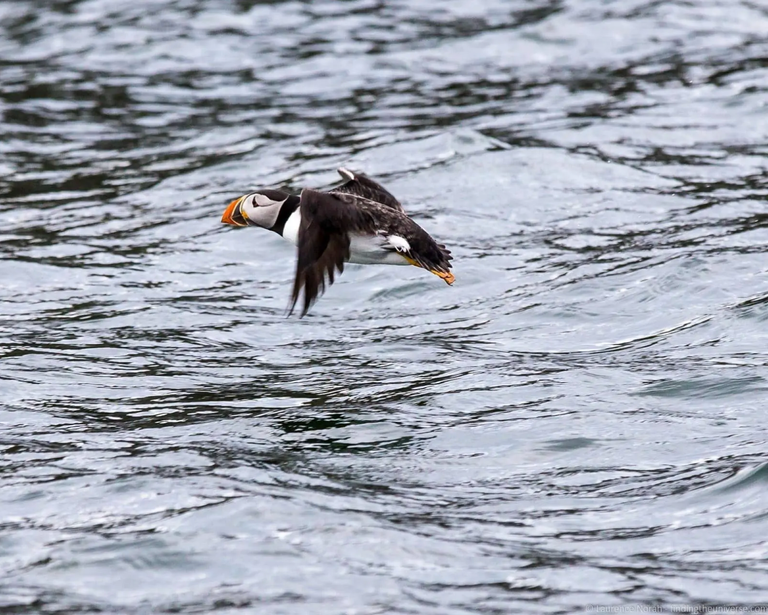 Puffin at flight > source
Puffin at flight > source
Sadly, puffins are classified in the UK as Red under the Birds of Conservation Concern. Nests on cliffs and islands at scattered locations around the coast of Scotland, northern England, South West England and Wales are at threat. Although the coastline is a naturally shifting boundary between the land and the sea, in many places humans have tried to limit or stop such change. Sea defences stretch around much of the coast (45% in England) in order to prevent the flooding of farmland, towns and villages. According to Wildlife Trusts this is something of particular concern with the rapid rise in sea-levels due to climate change.
Places like the Scottish Seabird Centre work towards conservation of all coastal habitats and the wildlife they support. And I suppose this is what led me to inquire after their Seafari tours. The thing is… I’m becoming ever more conscious of the impact that tourism has on the natural environment, and I’m trying my best to visit places in a sustainable, ethical way. I don’t want to limit my opportunity to experience the world, but I don’t want to cause more harm to it either.
The purpose of the Scottish Seabird Centre is to inspire and educate people about the Scottish marine environment so that they are motivated to finding ways to care for it, including supporting and volunteering for conservation projects. This'll be the focus of today's blogpost.
“We love nothing more than getting people out-doors to experience Scotland’s marine environment. It helps them to grow their knowledge, skills and confidence as well as benefitting their physical and mental health too.”
Scottish Seabird Centre
Without further ado, let me begin. I set off from Edinburgh on a train to North Berwick - only £8.80 return, but I suppose I could have cycled. A fifteen minute walk from the station took me directly to the beach, where I ladened my pockets with three intriguing pebbles. I had wondered if these might be volcanic tuffs or cementstones - and Clive Mitchell's video on YouTube confirmed this. But if there are any geologists here, do jump in with a comment or two! Then I dilly-dallied in the Scottish Seabird Centre, where I learned all about “nurdles” – and I’d love to open up this post by sharing my insights, in brief, with you!


The Plastic Soup note that ‘nurdles’ are otherwise known as ‘mermaids’ tears’ – unfortunately, they are far less poetic in reality. These lentil-sized plastic particles, plastics in general, are now ubiquitous in our natural environment – in fact, they’re becoming part of Earth’s fossil record and a marker of the Anthropocene, our current geological era. “In the EU alone, up to 23 billion plastic nurdles end up in the environment every day. In one year, this amounts to an inconceivable 8 trillion nurdles that equates to 160 million kilos. And this is only in Europe.”
Nurdles are made from fossil fuels and a cocktail of harmful chemicals these can include phthalates, Bisphenol A (BPA), flame retardants, organotins, heavy metals and PFAS. These toxic chemicals leach out into the environment and can enter the food chain. And the Great Global Nurdle Hunt estimates that about 230 billion kilos of plastic nurdles enter our seas and oceans every year. Which is horrific. The aim of their initiative is to raise awareness and advocate for solutions by presenting evidence to governments and industries.
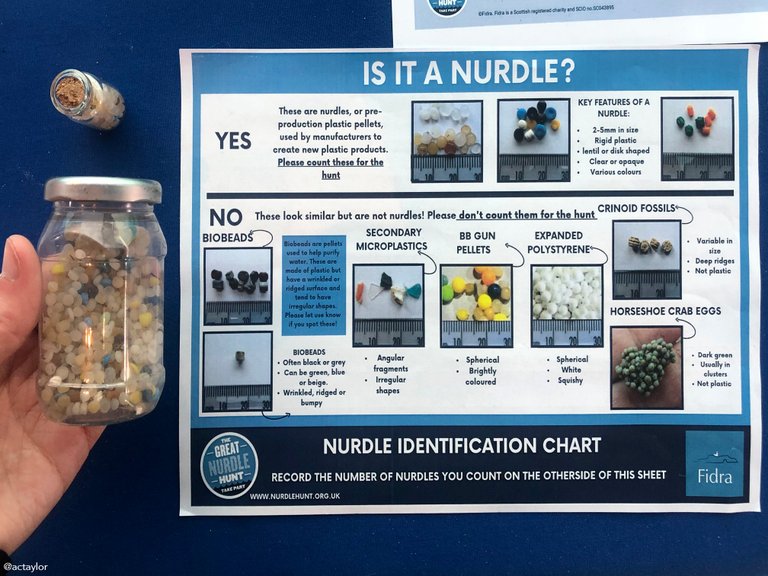
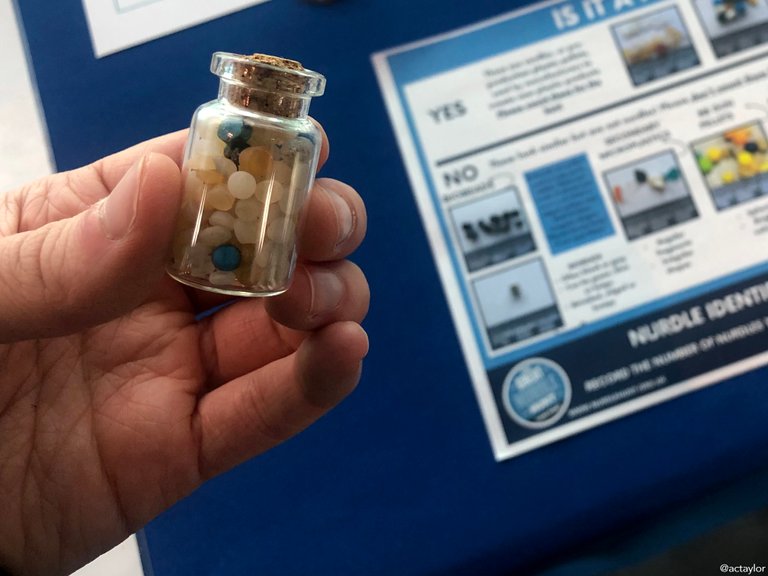
The GGNH, organised by the charity Fidra, engages citizen scientists in collecting data on plastic pellet (nurdle) pollution globally. Taking part in is an easy, fun way to contribute valuable data that helps illustrate worldwide nurdle pollution – perfect excursion for any would-be traveller. Especially travelling families with kids, I think! Participants can join in group hunts at East or West beaches in North Berwick, equipped with necessary tools and information. If you’re in the area and want to get involved, do.
And now...
The Isle of May
(Delighted to note I'm the first to place a @pinmapple pin here! Hopefully the following will entice more Hivers to visit.)
I travelled to the island on a Seafari RIB (rigid inflatable boat). The cost of the ticket was £60 as it included a cruise around the iconic Bass Rock, a stop-off at the island, and a guided tour. You can read more about the Landing Trip, and view the transport calendar, here. (I knew I was in the right place when I noticed a badge on the rucksack of the American traveller in front of me...)
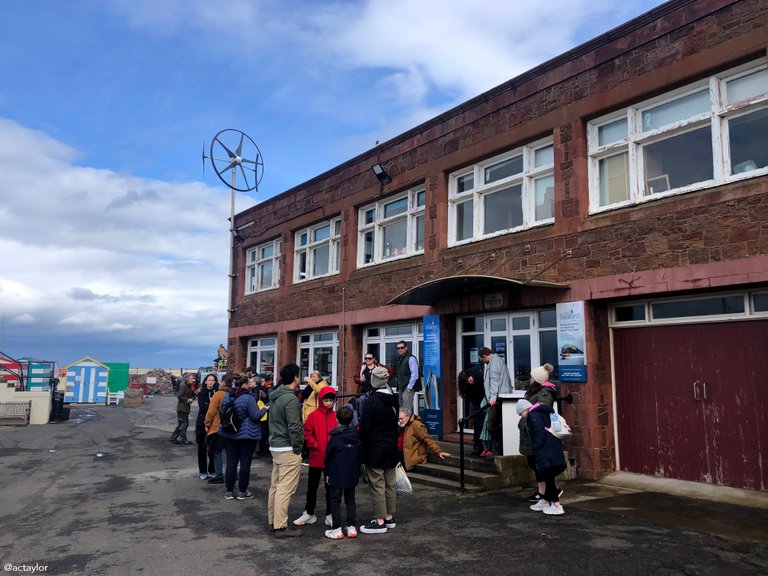
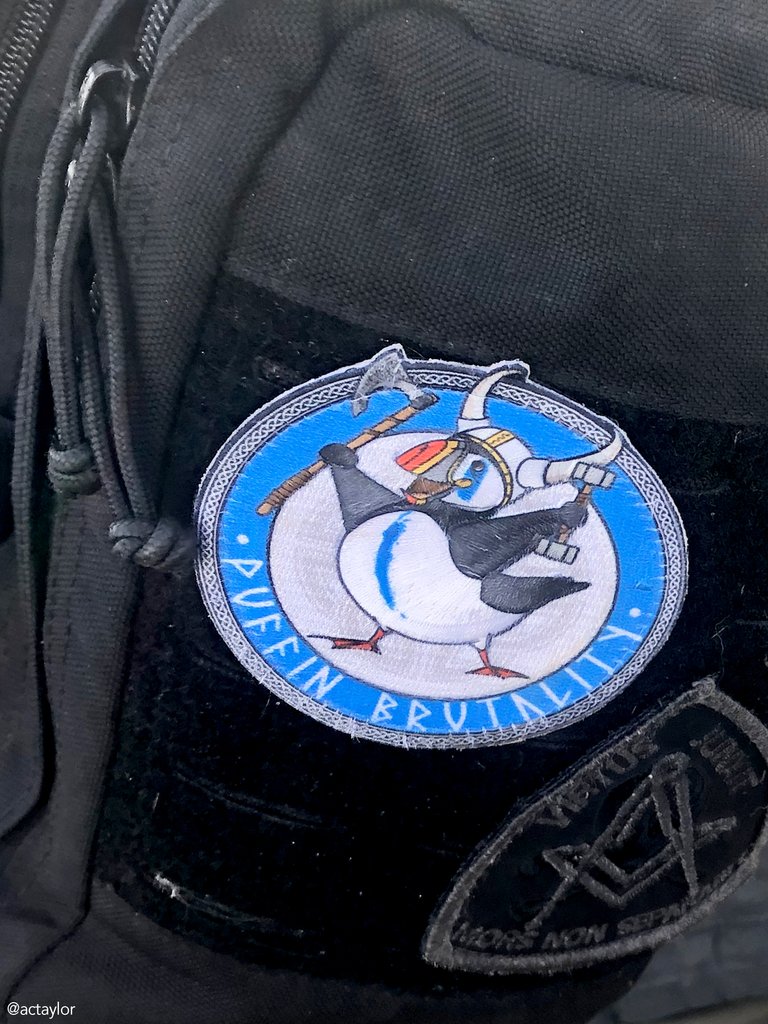
Bass Rock, a towering carboniferous rock in the Firth of Forth, boasts the world's largest gannet colony, with over 150,000 birds during peak breeding season, earning it the title of one of the “wildlife wonders of the world” by Sir David Attenborough. Despite its uninhabited status today, it has a rich history, serving as a Christian retreat in the seventh century and later as a castle and prison – the remnants of which are still standing! The island is a volcanic plug and over 340 million years old, the scale of which is incredibly difficult to comprehend. At its base were a couple of seals and their pup – sheltered by the cliff.
Whilst scouring the imposing cliff face, I caught sight of my first puffin amongst the gannets! Which was quite unusual, according to our guide, as the puffin colony is based on the Isle of May – and puffins are quite "homey"... if that makes sense. Gannets themselves are incredible, with bills that have collapsible nostrils and naturally filter salt out of their bloodstream.


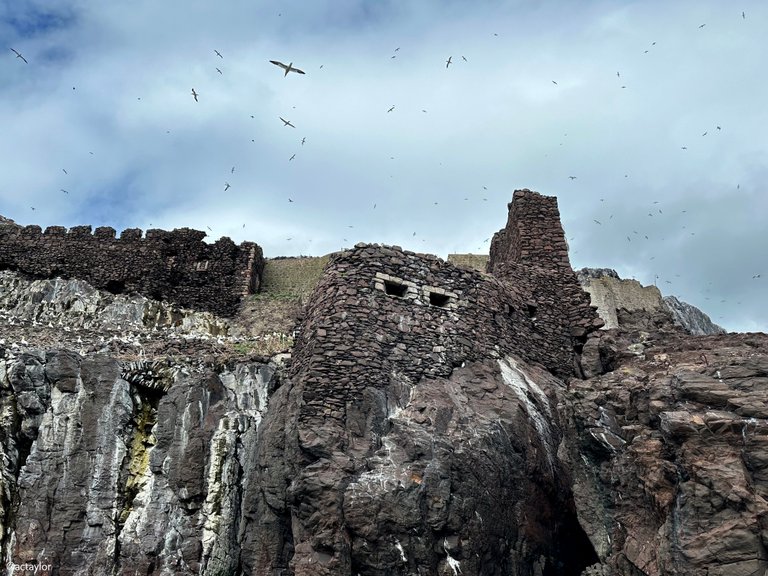



As we continued our journey on to the Isle of May, puffins began to appear more rapidly as little white and black tufts in the distance. It surprised me to find that they are so shy and elusive. Plenty of fluttering above the water, then swooping down to plop clumsily across wave peaks. Not at all like the genteel gannet, but priceless nonetheless. Unfortunately, due to recent bad weather, the puffins weren’t ready to roost just yet. And although the mountainsides are riddled with little burrows and crevices, they kept mainly to the water. I’ve had to settle for a seabird centre pic (above) in order to share the moment with you…
Because the photographs I took... well. Hahaha. See below. I've circled all elusive puffin sightings - not that you needed any indication as you really couldn't get clearer images than these, right?

Roughly an hour after departing North Berwick, we reached the Isle of May. The island is a designated nature reserve, managed by Scottish Natural Heritage. It is home to a large colonies of seabirds, asides from puffins, that include razorbills, guillemots, and kittiwakes. In addition to seabirds, the Isle of May also supports a variety of plant species and is an important breeding ground for seals. One curious seadog followed us about the island – head bopping above the water to stare avidly in our direction. I guess they don't get many visitors in these parts...


I was led about the rugged coastline by our guide David Steel – who runs an excellent blog of the site’s comings and goings, accessible here. Visiting the historic lighthouses (of which there are three), and observing the diverse wildlife that inhabits the island was so fun - and so grounded. Such a range of birds find their way here - David was telling me, for example, that on the 11th of April a Hoopoe came visiting! It had overshot Europe by “just a stretch” on its return migration from Africa and came to Scotland instead!

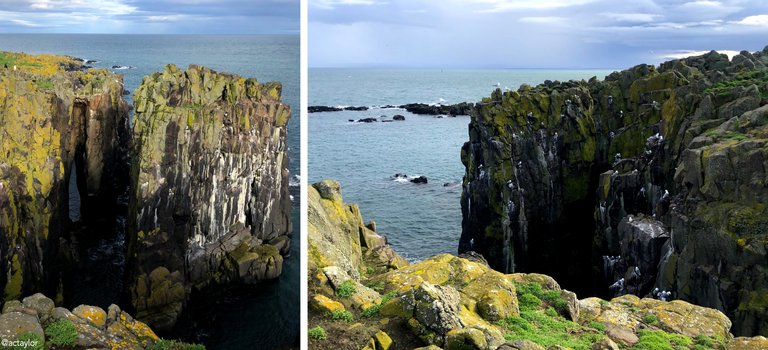

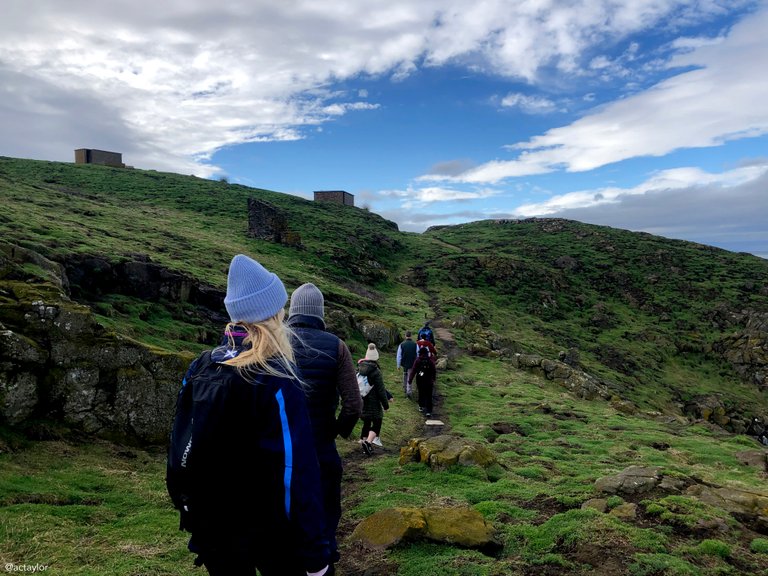
My enthusiasm (I really have too much) sparked David’s interest and I caught the glint in his eye as he suggested I volunteer on the island over the summer... I can’t say the thought doesn’t excite me… handling pufflings and making some mark with the SOS Puffin Project – even just for a week between jobs - appeals to me. I’ve always been drawn to conservation efforts, having volunteered with the “Bird Lady” Sylvia Durrant during my Primary School days living in the Bay area in Auckland, New Zealand. I’d rush home after school two days a week to assist with feeding chicks, and trip down to the rockpools on weekends to babysit Little Blue Penguins as they paddled about, regaining their “sea-legs” after being hit by jet skis or caught in nets/oil spills.
David noted that the island is always looking for volunteers – and there’re no special requirements for the role, except, well, a keen interest. I’ve noticed several Hivers are avidly conserving in their own particular ways… So, if this sounds like something you might be interested in, I’d encourage you to reach out. I’ll link you to David Steel’s contact details here.
Accommodation on the island is offered to up to 16 researchers in shared bunk rooms. There is a kitchen and living area, basic lab facilities – benches, microscopes, etc. But you’re expected to bring your own bed linen, towels, food and other equipment. At peak season, the accommodation can be fully booked. The efforts you’d be expected to get involved in… well, as mentioned, counting eggs and handling pufflings (just a side-note, isn’t that the sweetest name for a puffin chick?), catching and ringing bird species, maintaining the Top Heliogrand Trap (detailed below), as well as taking detailed records of sandeels, other foodstuffs, and flora. Reserves are used for a wide variety of research and survey projects, including individual informal surveys, student dissertations and academic study.

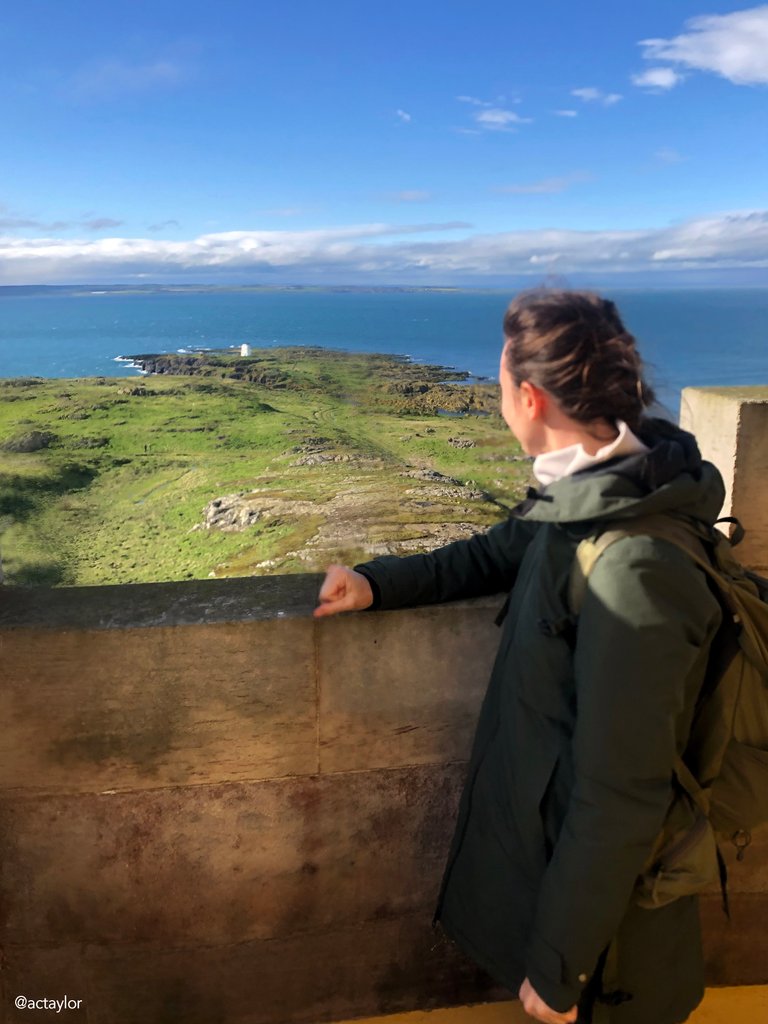
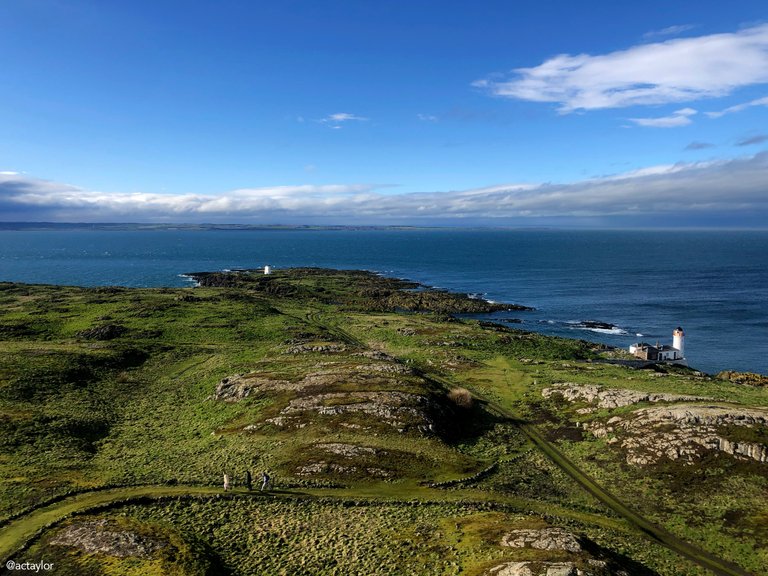
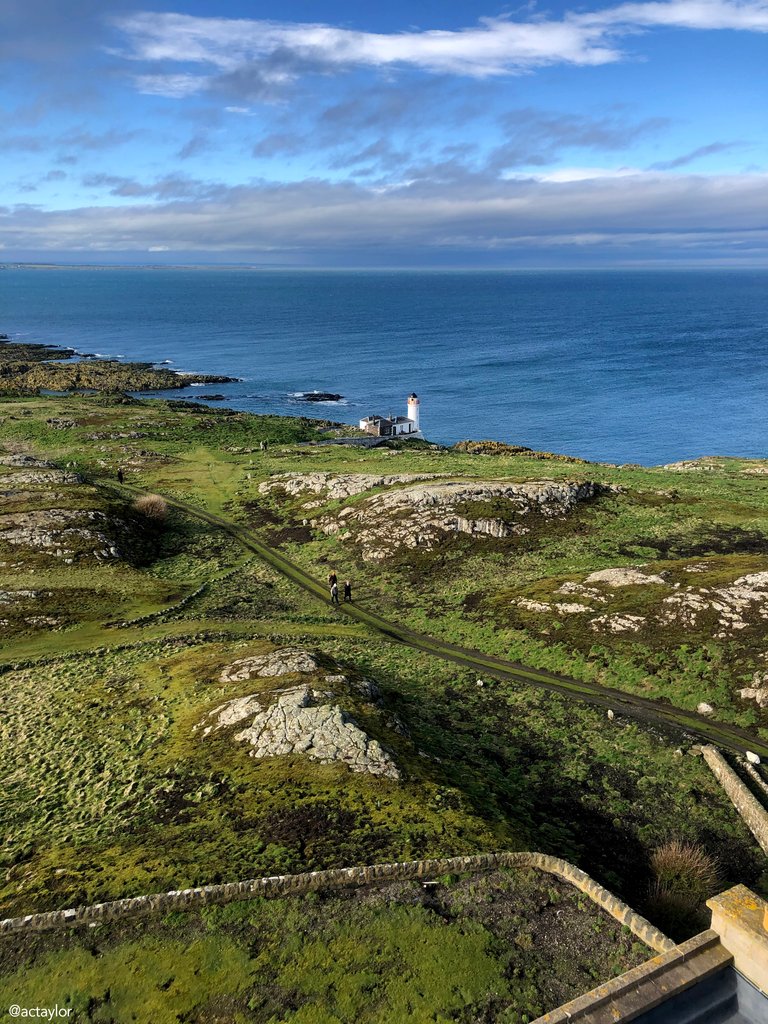
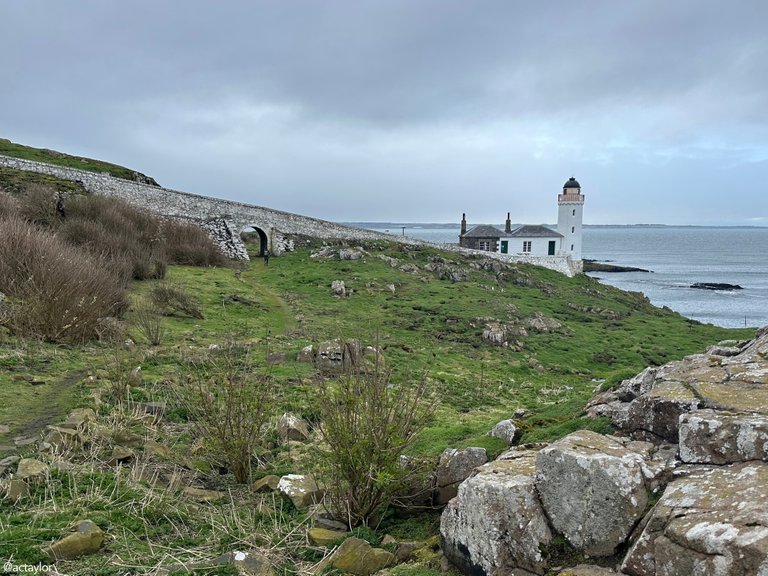

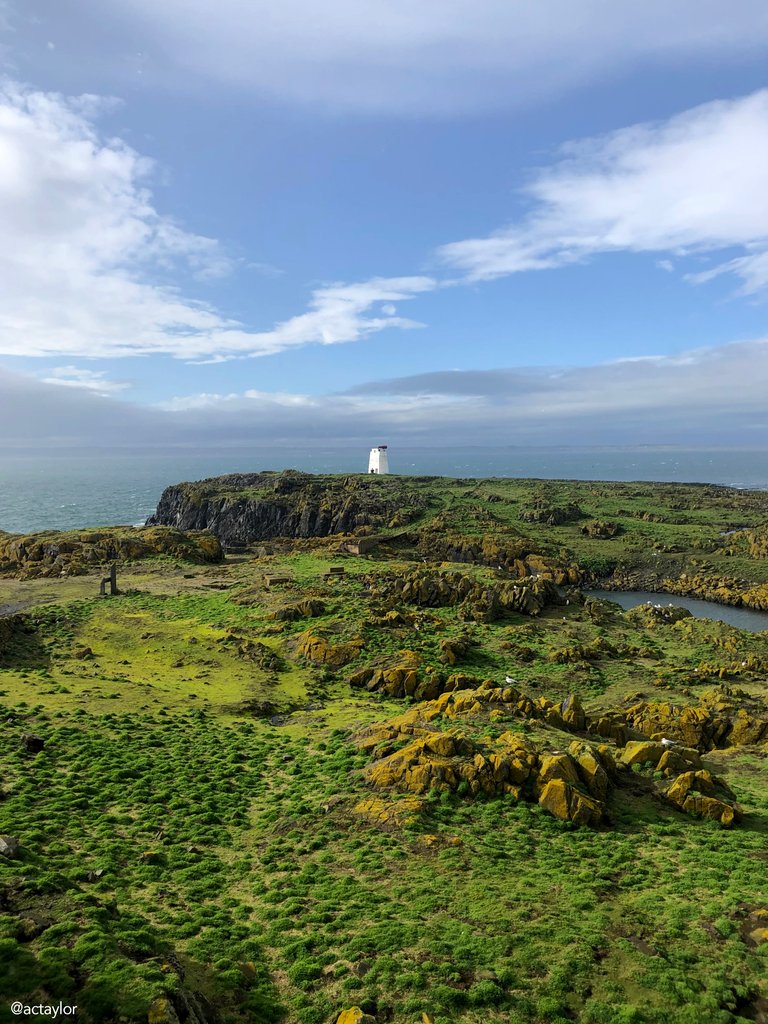
Below, we have the Top Heligoland Trap (used for catching and ringing passerine birds). It’s large and has a funnel shape. The name is taken from the German island of Heligoland where the first trap of its kind was developed as a way of monitoring bird populations and migration. The bird observatory on the Isle of May is Scotland’s oldest bird observatory, founded in 1934. The observatory is administered by a charitable trust (The Isle of May Bird Observatory and Field Station Trust).

 Operation Baltic transportable heligoland trap-side and top views. > source
Operation Baltic transportable heligoland trap-side and top views. > source
I didn’t really discuss the built heritage of May – which is fascinating, too, drifting all the way back to the Vikings and medieval monks who encouraged pilgrims to bathe in the Isle’s blessed waters. And in more recent centuries, just check out the beautiful spiral staircase in the Robert Stevenson Lighthouse...
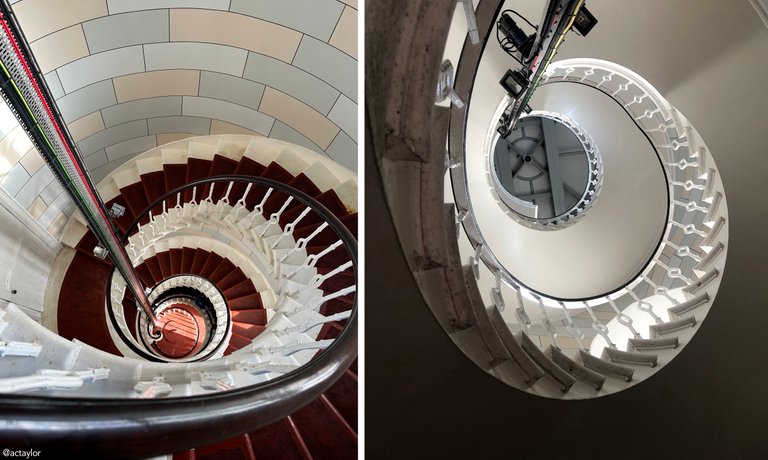
But my focus today has been on conservation efforts.
I hope this read inspires you!
Disclaimer
Blogger: @actaylor
Photographs: unless otherwise noted, all images were taken by me with an iPhone 8
Most excellent work here! Thank you for showing the network how it is done!
Thanks, haha!! 💫🌸
Do it!! Volunteer!!! I have never been to or actually heard of that little island. Looks amazing though.
@azircon - whatcha reckon to the three pebbles?
Voted not only this one, but 3 others to compensate! It’s just that good
It really is isn't it!!
Wah!! Thank you @azircon and @meesterboom 💛💫 Super kind. The May is a beautiful island, pretty untouched considering. And now largely commandeered by birdlife. I'd highly recommend visiting! 🌞
Well deserved!
I am definitely putting it on the list of places to visit
Your post it's so good with so many interesting explanations, the isle of may look so fascinating, what a wild nature, I would like to be volunteer here unfortunately I'm not a resarcher 😭
Thank you 🙏🌸 And you absolutely don't have to be a researcher, @noemilunastorta - if you're up to roughing it for a short stint, don't mind getting guano on your hands, and are passionate about conservation: then that's all you need!
Hi @actaylor,
Thank you for participating in the #teamuk curated tag. We have upvoted your quality content.
For more information visit our discord https://discord.gg/8CVx2Am
We had a close encounter with puffins on Staffa years ago. We pass Bass Rock on the way to family in Edinburgh, but I've not been that way in a boat. Some day we will explore the Scottish isles some more.
The plastic crap we're spreading everywhere is terrible. Companies need to be fined for letting it spread.
!PIZZA
What a coincidence - was discussing Straffa at work today! 🌞 And Eriksay, Harris, Lewis, Mull. Trying to decide where to go next... Envious of your close encounter - they steered well clear of land while we were there. How close did you get? Did you see them popping in and out of their burrows? Definitely couldn't recommend the RIB out to The May more - perhaps book a trip next time you're visiting family in Edinburgh, @steevc? This time of year is alright for puffins and gannets, though May-June is better.
And I absolutely agree... companies need to be held accountable. It's hard to comprehend the damage that has already been caused by plastic waste. Learning about nurdles was a shock - and a reality check.
We were sat on top of the island watching the birds out at sea when they flew in and wandered around a few feet away. I have some photos somewhere that were originally on film as it's that long ago.
We want to do another tour up there some time. There's lots of places we haven't been.
Ahh, what a special experience @steevc! 🐧💫 You must have some incredible pictures. If you do find that film, please share? I imagine it would have been pretty surreal being on Straffa, too. I hear it’s a beautiful place.
Congratulations, your post has been added to Pinmapple! 🎉🥳🍍
Did you know you have your own profile map?
And every post has their own map too!
Want to have your post on the map too?
Hiya, @ybanezkim26 here, just swinging by to let you know that this post made it into our Honorable Mentions in Travel Digest #2180.
Your post has been manually curated by the @pinmapple team. If you like what we're doing, please drop by to check out all the rest of today's great posts and consider supporting other authors like yourself and us so we can keep the project going!
Become part of our travel community:
Oh!! Thank you very much @ybanezkim26 🤩 and @pinmapple